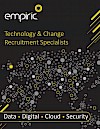Technology Transformation in 2018: How Are The Forecasts Stacking Up?



2018 has been a busy year for the tech sector, with a whole raft of transformative changes coming through. Nevertheless, it can be tough to forecast change in the near term. As Bill Gates said, “We always overestimate the change that will occur in the next two years and underestimate the change that will occur in the next ten.”
So how have predictions for 2018 fared so far?
Bob O'Donnell, writing at TechSpot, predicted that “AI will start to enable empathetic, intelligent computing”. “We should start to see more human-like responses to our queries and requests,” he notes. “Multi-part conversations, more comprehensive answers, as well as appropriate and even insightful suggestions based on what it is we’re doing (or trying to do).”
A demonstration of the Google Assistant Duplex feature at the Google I/O conference in May did almost all of that, booking a table at a restaurant in a conversation that it was hard to imagine was not between two humans. While there are limits on what the AI can do, the demonstration was persuasive enough that the internet began looking at the ethical issues of using robocallers. Should a robocaller always announce and identify itself? Will misuse of the technology erode trust? And what’s next for the tens of thousands of people employed in telephone customer support and telemarketing?
What’s not in doubt is that human-machine interactions will continue to improve – and will be informed by the results of ever more complex machine learning models.
Looking at the year ahead, nearly all analysts flagged the seismic impact that GDPR would have on the use of data in marketing, advertising and analytics – and they were quite right. Becoming GDPR compliant was a key challenge for the year as businesses identified exactly what was required, established where they were collecting data and set out on having their email lists manually opt in to continue receiving communication. And while marketers went into overdrive, the legislation presented a potentially existential crisis for the retargeting industry. Of course it will remain to be seen how the rules are actually interpreted and what will really be enforced as cases begin to enter the courts.
There has also been a second wave landing in the Big Data field, and one that likely couldn’t have been predicted: the rolling story of the misuse of Facebook’s data. There is growing public disquiet about the sharing of personal information and – following the Equifax hack in 2017 – the Facebook story was a watershed moment. While the network provides sufficient value that relatively few will quit the service, the crisis represents a speed bump, if not a crash barrier for the business. A reported 2m people under 25 will stop using the network in the US this year, according to eMarketer; and the news that the network had lost 3m users in Europe seemingly resulted in a $119bn drop in the company’s market value overnight (equivalent to a 19% drop). All of this underlines changing public attitudes to what is being collected and how it is being processed.
“The industry has to come up with a solution that will allow them to continue to grow but also protect their customers who want their privacy protecting,” notes wireless and telecoms expert Jeff Kagan. And that’s not to mention the fact that the era of antitrust has returned with Google (a business fundamentally built on data), being fined £3.8bn over the way that the Android OS is presented.
At the start of the year, we predicted that security specialists would increasingly be taking a place at the highest levels of business. Has it come to pass?
“In the last couple of years I have heard routinely that the CISO now has a much more important voice and standing in the boardroom,” notes Chris Rodriguez, ICT Senior Industry Analyst at Frost & Sullivan. “Equifax was not necessarily the impetus for that but rather, I believe it was the combination of many high profile data breaches in recent years.”
“There has certainly been additional awareness from companies regarding the importance of information/data security; there has also been a lot more talk about privacy, not just security,” says Alex Hamerstone, the TrustedSec Governance, Risk and Compliance Practice Lead. “There is a difference between an organisation designating someone as CISO in what may be a symbolic gesture, versus having a CISO with a lot of influence. With that being said, many companies are now designating a CISO, and many others are giving the CISO additional influence.”
“Mega trends of convergence – as well as new technologies – have accelerated significantly,” adds Chris. “Security layers are flattening as important new technologies such as Advanced Malware Sandbox are incorporated into firewall platforms and broader breach detection platforms. Regarding new technologies, machine learning and advanced analysis technologies are becoming more prevalent and will quickly be considered ‘table-stakes’ instead of an advanced feature.”
The key forecasts in cloud are uniformly around growth. Forrester predicted that the total global public cloud market would reach $178bn in 2018, growing at a compound annual growth rate (CAGR) of 22%; and that more than 50% of global businesses would incorporate public cloud platform in its digital transformation plans. Gartner reports that these predictions were on the mark – with 21.4% growth in 2018 lifting the market to $186.4bn in global value. RightScale, meanwhile, noted that 96% of organisations polled were already using cloud; 38% cite public cloud adoption as their top priority; and 81% have multi-cloud solutions in place. Clearly the only thing that will slow cloud adoption is reaching complete market saturation.

Perhaps the greatest trend, though, is technological convergence – cloud enabling data processing, taking IoT and digital inputs and feeding the information into machine learning algorithms that offer real-time analysis and forecasting.
However, it’s very hard to predict the utilities that 5G and AI technologies may enable in the near future. As Jeff Kagan notes, Uber relies on GPS, high speed internet and a two-sided customer-driver network; but few would have predicted in January 2009 that a taxi platform would become one of the most highly valued companies in the world in less than a decade.
Given the advances that are now taking place, though, there’s little doubt that we’ll see similar disruption in the coming years.

Empiric is a multi-award winning business and one of the fastest growing technology and transformation recruitment agency's specialising in data, digital, cloud and security. We supply technology and change recruitment services to businesses looking for both contract and permanent professionals.

Read more (pdf download)
Empiric are committed to changing the gender and diversity imbalance within the technology sector. In addition to Next Tech Girls we proactively target skilled professionals from minority groups which in turn can help you meet your own diversity commitments. Our active investment within the tech community allows us to engage with specific talent pools and deliver a short list of relevant and diverse candidates.
For more information contact 02036757777 To view our latest job opportunities click here.